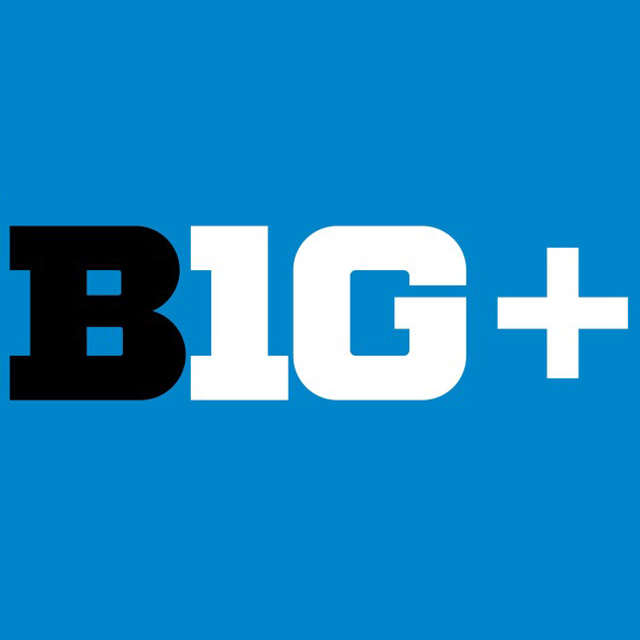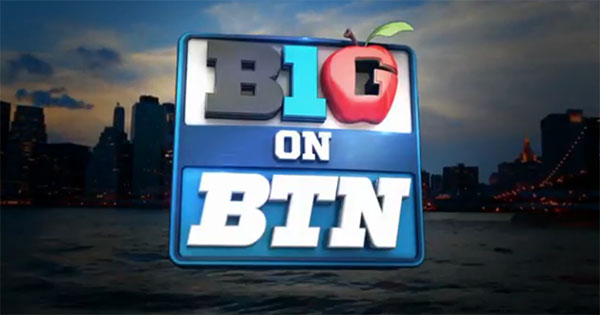Tom Dienhart, BTN.com Senior Writer, October 19, 2017
[btn-post-package-v2]
NEW YORK, N.Y. — The Empire State Building has nothing on 7-2 Purdue big man Isaac Haas, as the New York skyline got a little bigger today with Big Ten basketball media day in town.
This is the second year in a row the conference has taken this event on the road from its traditional home of Chicago, where it will return next year. But with Maryland and Rutgers joining the conference in 2014, the Big Ten has wanted to show it ?lives? in the East. Commissioner Jim Delany said he aspires to have an 80-20 split when it comes to having events in the Midwest and East, respectively.
Last year, this event was in Washington, D.C., as a set up to the Big Ten tourney, which was held at the Verizon Center. This season, the Big Ten tourney will be at Madison Square Garden from February 28-March 4.
If this seems early, you are correct.
The Big East has use of MSG for its tourney the following week when the Big Ten typically plays its event along with other power conferences. To accommodate the Big East, the Big Ten tournament will take place one week earlier than usual, ending the week before Selection Sunday. An undesirable consequence: Teams could be off almost two weeks before the NCAA Tournament. Another accommodation to make the tourney happen on the grand stage of New York: The Big Ten will start conference games on Dec. 1, 2017, and will conclude on February 25.
"I wanted to signal as much as anything else is that most of our institutions and most of our fan base is in the Midwest, and we will be there a good bit, but we'll also be living here and trying to bring those two regions together from the standpoint of competition, fan exposure, television exposure, marketing exposure," said Delany. "Because I think it's an incredibly important area for us, and we want to be here. So it's just a signal that we'll be back."
Watch all of our Media Day video coverage over here, too.
20-GAME LEAGUE SLATE COMING: The Big Ten announced today it will play a 20-game league schedule beginning in 2018-19. The conference plays 18 conference games now. Among other things, it's hoped a 20-game league slate will help the Big Ten get more teams in the NCAA tourney. No doubt, strengths of schedules will improve.
?People respond more to conference than non-conference games,? said Big Ten commissioner Jim Delany.
?We can spread out games and control the quality of the games. It?s a chance to make the presentation of Big Ten basketball even better.?
Under the new format, teams will play seven opponents twice and six teams once (three home, three away) in a given season. The three in-state rivalries - Illinois/Northwestern, Indiana/Purdue and Michigan/Michigan State - will be played twice annually, while the new schedule will also include a regional component to increase the frequency of games among teams in similar areas.
?I think in terms of the rivalries, I think that's for the fans in many respects, it creates interest in that state, television interest,? said Iowa coach Fran McCaffery. ?So I think it stands to reason, when you have traditional rivals, you play those teams. I think it's good that our league recognized that and has provided those opportunities.?
Over the course of a six-year cycle (12 playing opportunities), in-state rivals will play each other 12 times, regional opponents will play 10 times, and all other teams will play nine times.
?This allows us to build on historic rivalries and build some regionalization,? said Delany.
NEW RULES: Talking to Big Ten associate commissioner Rick Boyages, there are no major rules changes this season.
"The game is always looking to improve," said Boyages. So, there are a few notable changes:
- The coaches box is expanding from 28 feet to 38 feet. This will allow coaches to improve communication with their teams, especially when the teams are at the opposite end of the court.
- The shot clock will be reset to 20 seconds when the ball is inbounded in the frontcourt after a foul by the defense. If more than 20 seconds remain on the shot clock, the shot clock will not be reset.
- Throw-in spots will occur from more consistent spots in the frontcourt when the offensive team retains possession after a non-shooting foul or other stoppages in the game.
HOME ON THE ROAD: Northwestern has swagger. Really. And, the Wildcats have earned it, coming off the program?s first NCAA tournament ever. This may just be a start, as NU welcomes back the core of last year?s team, including Bryant McIntosh, Vic Law and Scott Lindsey. Want more? In the offseason, coach Chris Collins inked a big contract to keep him in Evanston through 2024-25; he is entering his fifth on campus with 73-60 mark.
But this year?s team has a unique obstacle: It won?t play any games at its home arena. Northwestern?s home court of Welsh-Ryan is undergoing a $110 million renovation, forcing the team to play its home games at Allstate Arena, which is near O?Hare Airport and 16 miles from NU?s campus (40-minute drive).
?Certainly it's going to be different this year not having an on-campus facility,? said Collins. ?Excited about what's coming down the pike. But for this year, logistically, it will be different.
?I was able during the offseason to pick the brain of DePaul staff a little bit. Being around those guys, you see the coaches out on the road in the summer and during the recruiting period, just to get an idea from them, how did they approach the travel from campus out there. What did they do, what would they have done differently if they could? Things of that nature.?
NEW COACHES: The Big Ten welcomes three new coaches: Illinois? Brad Underwood; Indiana?s Archie Miller; Ohio State?s Chris Holtmann. Each is looking to improve the fortunes of their respective school.
Miller-who arrives from Dayton–may have the best chance for success this season of the trio, as he inherits a roster that has building blocks in Robert Johnson and Devonte Green. And IU won 27 games as recently as 2015-16, when it made the Big Dance.
"I'm in an unbelievable league with tremendous coaches and players," said Miller. "And I'm going to have to figure out how our stuff works within this conference as time goes by. But at your disposal is Assembly Hall. At your disposal is one of the great fan bases in college basketball."
Underwood (who was at Oklahoma State) and Holtmann (Butler) have larger tasks. The Fighting Illini haven?t made the NCAA tourney since 2013; the Buckeyes? drought stretches to 2015.
Holtmann is the latest Butler coach to move to bigger things. In fact, five of the last six Bulldogs coaches have taken jobs on bigger stages-to varying degrees of success. Barry Collier went on to Nebraska; Thad Matta (Xavier); Todd Lickliter (Iowa); Brad Stevens (Celtics); now, Holtmann.
RUN OF EXCELLENCE: This run is remarkable, really. In each of the last 16 years, Wisconsin has finished in the top four of the Big Ten standings. You have to go back to the 1999-2000 season to find the last time the Badgers finished outside the top four, as they went 8-8 and finished sixth. Still, Wisconsin made a magical run to the Final Four that year under Dick Bennett.
The last time the Badgers had a losing Big Ten record? It was 1997-98, when they went 3-13. Wisconsin lost four starters from last year?s club, including Bronson Koenig and Nigel Hayes. This year?s team has some talent, including Ethan Happ and D?Mitrik Trice. Will the incredible streak continue?
"We never want to get ahead of ourselves, but we are proud of the tradition that has been started here," said Wisconsin coach Greg Gard.
TITLE-LESS: It?s difficult to believe, but the Big Ten hasn?t won the national title since Tom Izzo and Michigan State cut down the nets in the now-demolished RCA Dome after the 1999-2000 season. Several Big Ten teams have come close since. A look at Big Ten Final Four teams since 2000-01:
2001: Michigan State
2002: Indiana (runner-up)
2005: Illinois (runner-up); Michigan State
2007: Ohio State (runner-up)
2009: Michigan State (runner-up)
2010: Michigan State
2012: Ohio State
2013: Michigan (runner-up)
2014: Wisconsin
2015: Wisconsin (runner-up); Michigan State







 WATCH LIVE: Select Spring Football, lacrosse quarterfinals, tennis championships and more.
WATCH LIVE: Select Spring Football, lacrosse quarterfinals, tennis championships and more. 